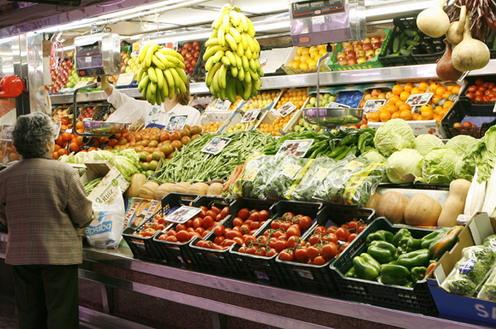The Consumer Price Index (CPI) grew by 0.7% in November in year-on-year terms, just as in October, according to figures published by the National Statistics Institute (INE). This rate coincides with the advance figure published by the INE at the end of last month.
The year-on-year CPI has remained stable due to the fact that the acceleration in prices of services and non-processed food offset the deceleration of processed food and energy prices, while inflation in non-energy industrial goods (NEIG) remains flat. The average annual rate for November stood at -0.4%. In month-on-month terms, the general CPI general rose by 0.4%, an identical figure to that of the same month in 2015.
Energy product prices fell in November by 0.5% year-on-year, versus the practically stable prices recorded in October (0.1%). This trend is mainly due to fuels and lubricants, down by 1.2 points to 0.2% and, to a lesser extent, to electricity, down by three tenths to 0.6%.
Food inflation in November stood at 0.4%, one tenth higher than in the previous month, due to the acceleration of unprocessed food prices, up by four tenths to 0.6%.This trend is mainly due to prices of legumes and fresh vegetables, where inflation eased by over four points to 1.1%. Processed food prices decelerated by a tenth to 0.3% year-on-year.
Core inflation (which excludes the most volatile elements of CPI, fresh food and energy) remained at 0.8%, due to a slight acceleration of service prices (one tenth) to 1.2%, offset by a similar deceleration in processed food prices (to 0.3%), while the annual growth rate of NEIG prices continued at 0.6%.
In month-on-month terms, the CPI increased by 0.4% in November, just as it did in the same month of 2015. By components, energy product prices remained stable after the 0.7% increase the previous year, services prices fell by 0.1%, compared to a drop of 0.2% in the same month of 2015, NEIG prices rose by 1.5%, on a par with last November, and food prices dropped by 0.1%, one tenth less than the previous year.
In the food segment, unprocessed food prices in November fell by -0.4% month-on-month, four tenths more than in the same month 2015, while processed food prices stabilised, compared to a 0.1% increase the previous year. In the non-processed food segment, prices of legumes and fresh vegetables fell by 0.3% versus a 4.8% drop one year previously.
The year-on-year CPI shrank in November in eight autonomous regions, remained unchanged in six, and rose in three. All figures remained in a positive territory. The biggest year-on-year drops were posted in Cantabria, where inflation fell from 0.8% to 0.6%, and Asturias, down from 1.0% to 0.8%, while the highest rise was in the Canary Islands, from 0.6% to 0.8%. The highest inflation rates were posted in Catalonia and Navarre (1% and 0.9%, respectively), and the lowest in La Rioja and the Region of Valencia (both 0.4%).
The year-on-year constant tax CPI for November was 0.7%, the same as the general CPI.
INE has also published the harmonised CPI (CPIA) for November, the year-on-year rate being 0.5%, the same as for the previous month. This rate is one tenth lower than the figure advanced by Eurostat for the whole of the Eurozone (0.6%, versus 0.5% in the previous month), resulting in an inflation differential favourable to Spain over the Eurozone of one tenth in November, versus parity in October.
In short, the rate year-on-year of the CPI in November remained at 0.7% due to the increases in the prices of services and unprocessed food being offset by falling energy product and processed food prices. Core inflation remains stable at 0.8% and the inflation differential in Spain’s favour versus the Eurozone remains at one tenth, thereby maintaining the price competitiveness of the Spanish economy.






[…] post INFLATION STABILISES AT 0.7% appeared first on The Leader […]